Priscilla Paton's Blog
March 13, 2023
Chicks-on-the-Case Blog on Fathers, Humor, Dry Wit, and WHEN THE HOUSE BURNS.
Enjoy this blog which I wrote for Chicks on the Case!
And here’s a picture of my stoic father of few words. I miss him very much.

A rare smile
The post Chicks-on-the-Case Blog on Fathers, Humor, Dry Wit, and WHEN THE HOUSE BURNS. appeared first on Priscilla Paton.
February 28, 2023
Guest Blog for JungleRedWriters on Home, Homelessness, Comfy fires, and Arson
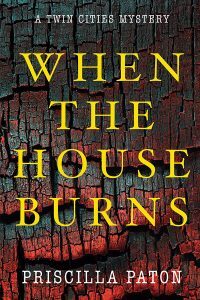
Greetings: Please check out my guest blog on my latest, When The House Burns, for the wonderful JungleRedWriters.
The post Guest Blog for JungleRedWriters on Home, Homelessness, Comfy fires, and Arson appeared first on Priscilla Paton.
February 14, 2023
A New Mystery, Fun, Pain, and WHEN THE HOUSE BURNS
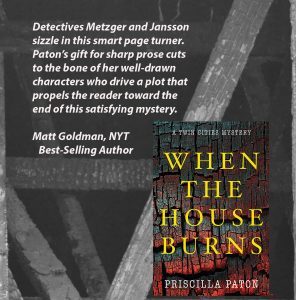
Today is Valentine’s Day and pub day for my latest, When The House Burns–sex, death, real estate. The writing of this book during the worst of the Covid Pandemic and a year of multiple traumas was not easy. I’m sharing here the blog I wrote for Women Writers, Women’s Books: Writing When Hurt, Writing to Heal.
May love be with you on this Valentine’s Day.
The post A New Mystery, Fun, Pain, and WHEN THE HOUSE BURNS appeared first on Priscilla Paton.
December 21, 2022
Holiday Cookies, Tradition, and Mysteries

Spritz, gluten-free, real butter
Tis the season of mysteries. What’s wrapped under the tree? Which liquor spiked the eggnog? Who will surprise us with a sudden yet abiding kindness? For the devout, mysteries underlie faith—the miracle of lights that burn throughout Hanukkah, the divine birth of Jesus under the light of a star, the burning Yule logs celebrating the darkest time of the year. Light against fear and loss, light for hope.
In 2022, we’re coping with the darkness the season and the news brings—long nights, the ongoing pandemic, children’s illnesses, war, displaced people. We hope for big solutions and look to cozy comforts, like cookies. Cookies multiply to be flavored with peppermint, almond, or anise, and then decorated. “Ugly sweater” cookie cutters are sold out, and pounds of butter disappear from grocery shelves.
Cookie making is a traditional family activity. My granddaughters love the decorating part and sometimes the icing goes right into the mouth instead of on the cookie. My sister and I as kids rolled out the dough for cut-outs but weren’t as successful as our mother at achieving the desired thinness. Thin cookies went further for a family of seven, allowing that the dogs would steal a few.

Krumkake production line with the Next Generation
A mysterious spice made my mother’s sugar cookie recipe distinct, though as in many recipes reworked during the Depression and WWII, shortening replaced butter. (The exception was Cookie Press creations, which allowed no substitutions.) The minimalist gingerbread dough, recipe below, started with hot molasses poured over shortening. The eggless dough depends on molasses to hold everything together and presents challenges. If the dough is too warm, it’s sticky; too cold it cracks; too much flour, it crumbles. Like Goldilocks, you have to discover what’s just right. But they kept very well, and we’d decorate them to hang from the Christmas tree. The cats and collie never bothered them, especially if the cookies were adorned by cinnamon Red Hots. Then the St. Bernard appeared, and the tree came down when the two-hundred-pound dog tugged on a gingerbread man who failed to run as fast as he can.
My husband’s family roots are Norwegian, and that means Lutefisk and Lefse. Like lobster, lutefisk is a butter delivery system, only there’s no lobster. People who confess to loving the preserved whitefish smother it in butter. (Old joke—to call lutefisk fish-jello is an insult to jello.) To make up for the lutefisk, there’s Scandinavian mulled wine, Gløgg (pronounced gloog). Christmas baking involves labor-intensive rearrangements of butter and sugar, which require special presses, forms, or irons to produce spritz, sandbakkels, and krumkake (like rolled pizzelli). In a wooden box, we have the heritage recipes of my husband’s maternal grandmother.
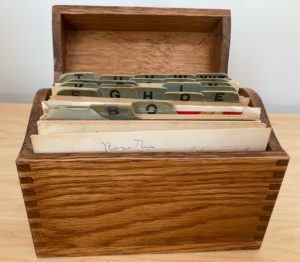
Vintage Recipes
The trouble with “heritage” is that often an element is missing. My grandmother-in-law, born in1899, was a servant on a Wisconsin farm in the Norwegian-speaking area of Westby. (She married the farmer’s son.) The recipes are jotted down in English as if someone had abruptly asked her to share. Directions are scant or missing altogether. The assumption was that the next generation learned at her side in a hot kitchen the feel of the dough and the look of doneness. 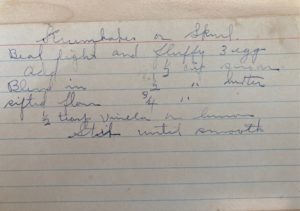
Krumkake or SkrulYouTube fills in the gaps now, so traditional cookies still abound. Enjoy them by the fire while reading a good mystery. May I recommend one of my Twin Cities Mysteries, Where Privacy Dies and Should Grace Fail? That’ll prepare you for the new one coming out February 14th, When The House Burns. No cookies in that book, but there is pie and a special appearance of brownie pudding—recipe to be released at pub time.
And happy holidays to all!

Ready to run
Farmhouse Ginger Cookies
This recipe requires refrigeration time.
Ingredients
1 C very hot molasses
½ C shortening
3 scant cups sifted flour. Or start with 2 ¾ cups and add flour if dough is too sticky to ball together. The dough should be firm but not crumbly.
2-3 tsp ginger
½ tsp baking soda
½ tsp salt
Heat molasses and pour over shortening. Add sifted dry ingredients. Mix well, roll into a ball, wrap well with cling wrap, and chill several hours.
Preheat oven to 350 degrees. Let dough warm up for 15 minutes or until pliable. Roll thin on flour-dusted board, cut into shapes with cookie cutters, and place on ungreased cookie sheets. Bake for about 8 minutes or until cookies are set and edges are just beginning to brown. If you wish to thread cookies to hang as decorations, use a slotted spatula to lift baked cookie off the pan and poke a hole through the top with a skewer. This must be done when the cookie is warm and soft. After they’re cool and crisp, store in cool dry place or decorate as desired.
The post Holiday Cookies, Tradition, and Mysteries appeared first on Priscilla Paton.
October 19, 2022
That's Not Funny
https://chicksonthecase.com/
April 19, 2021
April, Domestic Violence Books, a Survivors Memorial, Hope and Beauty Reborn

Hidden Hope
It’s spring. Rebirth abounds in the cold north, songbirds celebrate their return, and flowers dare display their pastel heads. It is not all bouquets since tragedy persists in a pandemic not fully conquered, international strife, and the killings of people of color. Homo sapiens cannot seem to learn live-saving lessons. At the best we are dunderheads who don’t get it, at the worst shuttered minds caught in cycles of violence.
Now I’m going to skip that thing about saying April is the cruelest month because it’s February, armpit of the year. April, according to the promoters-that-be, is a special month for at least thirty sublime-and-ridiculous causes. A partial list includes, and I’m reporting not judging, Math Awareness Month, Black Women’s History Month, National Arab American Month, National Car Care Month, Confederate History Month, National Soft Pretzel Month, National Child Abuse Awareness Month, and Sexual Assault Awareness and Prevention Month–SAAPM..
Child abuse and sexual assault run through books I’ve read winter to spring, randomly chosen. For nonfiction: Natasha Trethewey, Memorial Drive: A Daughter’s Memoir; Delia Ephron, Sister Mother Husband Dog; Becky Cooper, We Keep the Dead Close: A Murder at Harvard and a Half Century of Silence. For fiction: Delia Owens, Where the Crawdads Sing; Sadeqa Johnson The Yellow Wife; Sejal Badani, The Storyteller’s Secret; Kristen Lepionka, The Last Place You Look, and Jess Lourey, Unspeakable Things. Two caveats. First, not all is grim—they are journeys toward justice, hope, and life recovered, and many entertain thrills, fun, and romance. Delia Ephron’s essays contain pleasant fluff; however, one concerns how her mother’s unrelenting standards and disappearance into alcoholism warped Delia’s childhood. Second, men also write about abuse, and a few that pop to mind are Charles Dickens, Mark Twain, William Faulkner, Richard Russo, and James McBride.
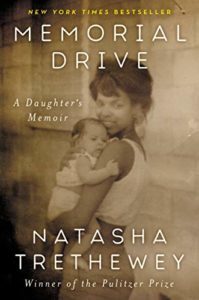 The starkest of the books above is Memorial Drive: A Daughter’s Memoir, by Pulitzer Prize winner and former U.S. Poet Laureate, Natasha Trethewey. Though familiar with Trethewey’s poetry, I did not know of the trauma that haunted her: when she was nineteen, her ex-stepfather shot her mother through the head. Trethewey writes that this short book was “a long and painful journey to write.” The myth of Cassandra helps Trethewey raise the memoir above a clinical account and face her inability as a child to speak out against her terrifying stepfather. The haunting question is why did her mother, an educated social worker, marry a bad man? She eventually divorced him and contacted law enforcement, but too little too late. There’s a jarring contrast between Trethewey’s lyricism and the transcription of threatening phone calls her mother received. The abuser/murderer would accept no logic or “truth” but his own.
The starkest of the books above is Memorial Drive: A Daughter’s Memoir, by Pulitzer Prize winner and former U.S. Poet Laureate, Natasha Trethewey. Though familiar with Trethewey’s poetry, I did not know of the trauma that haunted her: when she was nineteen, her ex-stepfather shot her mother through the head. Trethewey writes that this short book was “a long and painful journey to write.” The myth of Cassandra helps Trethewey raise the memoir above a clinical account and face her inability as a child to speak out against her terrifying stepfather. The haunting question is why did her mother, an educated social worker, marry a bad man? She eventually divorced him and contacted law enforcement, but too little too late. There’s a jarring contrast between Trethewey’s lyricism and the transcription of threatening phone calls her mother received. The abuser/murderer would accept no logic or “truth” but his own.
Authors must confront how to depict abuse without flattening the woman to a dire statistic. I face that in my fictional Twin Cities mysteries. Detective Deb Metzger has expertise in domestic violence, but that doesn’t make her a constant “expert” in understanding silenced victims or dealing with imperfect noisy ones. For a teen victim in Should Grace Fail, the transition to survivor appears rough, uncertain, and also comic.
In researching that mystery, I became familiar with a national hotline and resources in my area–The Hope Center and MNCASA.
Back to April, it is the time of pilgrimages. I am not heading to Canterbury like Geoffrey Chaucer’s tale tellers but to the Survivors Memorial in Boom Island Park. Minnesota artist Lori Greene has created colorful mosaic slabs, parts brought into wholeness, to honor and heal women who have suffered and survived. Such beauty is an act of effort, a gift of grace, and, when so much is severely battered, the choice to hope.

Artist Lori Greene
The post April, Domestic Violence Books, a Survivors Memorial, Hope and Beauty Reborn appeared first on Priscilla Paton.
December 14, 2020
Holiday Cookies, Recipes, Gløgg, Minnesota, and Mysteries

Light the Festive Tractor!
Tis the season of mysteries. What’s wrapped under the tree? Which liquor spiked the eggnog? Who will surprise us with a sudden yet abiding kindness? For the devout, mysteries underlie faith—the miracle of lights that burn throughout Hanukkah, the divine birth of Jesus under the light of a star, the burning Yule logs celebrating the darkest time of the year. Light against fear and loss, light for hope.
In 2020 as I sit in a snow-less Minnesota, the mysteries are of a medical kind, the how, when, and where of vaccines to stop the COVID rampage. Unknowns abound, and an “unknown” sounds more unsettling than a “mystery.” There can be promise and hope and thrills in a mystery. An unknown is just that, a blank, a void. One certainty of the holidays is the resurgence of the cookie. Every year the media covers new cookie recipes, classic cookie recipes, and how to organize cookie swaps. You can insist on chocolate chip cookies, but they are outdone by decorated gingerbread people, glittery sugar cookies, and specialty acts like peppery Pfeffernusse. “Ugly sweater” cookie cutters are sold out, and pounds of butter vanish from grocery shelves.

Family Art Project
I face a common dilemma. How many cookies to make when there is no large gathering? Can they be successfully sent via mail without breaking the biscuit or the bank? Can I go it alone?
Because cookie making most of all is a family activity. As kids, my sister and I rolled out the dough but weren’t as successful as our mother is achieving the desired thinness. Thin cookies went further for a family of seven, allowing that the dogs would steal a few.

Krumkake production line with the Next Generation
A mysterious spice made my mother’s sugar cookie recipe distinct, though as in many recipes reworked during the Depression and WWII, shortening replaced butter. (The exception was Cookie Press creations, which allowed no substitutions.) The minimalist gingerbread dough, recipe below, started with hot molasses poured over shortening. It’s not the easiest dough to work with because it’s eggless and depends on molasses to hold everything together. If the dough is too warm, it’s sticky; too cold it cracks; too much flour, it crumbles. Like Goldilocks, you have to discover what’s just right. But they kept very well, and we’d decorate them to hang from the Christmas tree. The cats and border collie never bothered them, especially if the cookies were adorned by cinnamon Red Hots. Then the St. Bernard appeared, and the tree came down when the Saint tugged on a gingerbread man who failed to run as fast as he can.
My husband’s family roots are Norwegian, and that means Lutefisk and Lefse. Like lobster, lutefisk is a butter delivery system, only there’s no lobster. People who confess to loving the preserved whitefish smother it in butter. (Old joke—to call lutefisk fish-jello is an insult to jello.) To make up for the lutefisk, there’s Scandinavian mulled wine, Gløgg (pronounced gloog). Christmas baking involves labor-intensive rearrangements of butter and sugar, which require special presses, forms, or irons to produce spritz, sandbakkels, and krumkake (like rolled pizzelli). In a wooden box, we have the heritage recipes of my husband’s maternal grandmother.

Vintage Recipes
The trouble with “heritage” is that often an element is missing, and circumstances, along with taste, change. My grandmother-in-law, born in1899, was a servant on a Wisconsin farm in the Norwegian-speaking area of Westby. (She married the farmer’s son.) The recipes are jotted down in English as if someone had abruptly asked her to share. Directions are scant or missing altogether. The assumption was that the next generation learned at her side in a hot kitchen the feel of the dough and the look of doneness. Baking by intuition and observation.

Krumkake or Skrul
YouTube fills in the gaps now, so traditional cookies still abound. What to do with them? Enjoy them by the fire while reading a good mystery. May I recommend my latest, Should Grace Fail?
And there’s always pie.
Farmhouse Ginger Cookies
This recipe requires refrigeration time.
Ingredients
1 C very hot molasses
½ C shortening
3 scant cups sifted flour. Or start with 2 ¾ cups and add flour if dough is too sticky to ball together. The dough should be firm but not crumbly.
2-3 tsp ginger
½ tsp baking soda
½ tsp salt
Heat molasses and pour over shortening. Add sifted dry ingredients. Mix well, roll into a ball, wrap well with cling wrap, and chill several hours.
Preheat oven to 350 degrees. Let dough warm up for 15 minutes or until pliable. Roll thin on flour-dusted board, cut into shapes with cookie cutters, and place on ungreased cookie sheets. Bake for about 8 minutes or until cookies are set and edges are just beginning to brown. If you wish to thread cookies to hang as decorations, use a slotted spatula to lift baked cookie off the pan and poke a hole through the top with a skewer. This must be done when the cookie is warm and soft. After they’re cool and crisp, store in cool dry place or decorate as desired.
The post Holiday Cookies, Recipes, Gløgg, Minnesota, and Mysteries appeared first on Priscilla Paton.
November 15, 2020
Sneak Preview SHOULD GRACE FAIL
Click on the link for a reading from the newest Twin Cities Mystery–
The post Sneak Preview SHOULD GRACE FAIL appeared first on Priscilla Paton.
October 6, 2020
Research, Diversity, and Writing the Not Me

When I was attending a regional middle school in rural Maine, I wanted to work for the United Nations. It seemed cool—the building’s international design, the New York City setting, the languages, the people of different colors from diverse countries, the mission. At the time, I was enduring mean-girl culture. Snip-snap, realign, re-friend, repeat. Maybe a blouse would be torn. No wonder I thought a mission of mediation and peace to be the ultimate goal.
Now I kill people. In novels, that is, the Twin Cities Mysteries. The series, set in the Minneapolis/St. Paul area, features two white detectives, sharp Erik Jansson and forceful Deb Metzger. Should Grace Fail, available this December, involves addiction, sex trafficking, racism, and bias against those who are LGBTQ plus. Admission: I don’t quite live in the Twin Cities, I’ve never been athletic like Erik, I’m not lesbian like Deb—though I too am white and middle-class. Like many authors, I’m drawn to writing about the Not Me to explore difficult topics and better comprehend what has been labeled “other.” For my readers, I want to create an adventure that merges seriousness and fun while respecting the realities of people’s lives.
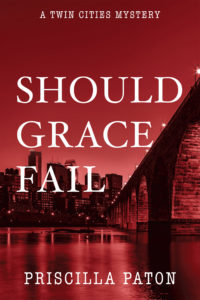
That means research and training on diversity because my detectives work and live in a multi-racial, multi-ethnic context and must be aware of issues like police bias against Blacks. Should Grace Fail was completed before the 2020 killing of George Floyd in Minneapolis, but the death of Philando Castile haunted its writing. My topic in part is white confusion. Erik, a whistle-blower, and Deb, non-cisgender, struggle to connect not only with the mistreated, but also with colleagues in uniform, a struggle that at times is comic. My detectives, as I have done, attend sensitivity workshops; these can provide insight or backfire, as the anger management seminar does in Where Privacy Dies.
To develop character, I do draw on my own experiences. In Should Grace Fail, a man had a severe accident—based on the accident of a farm neighbor. Erik Jansson overhears a conversation about popping oxy pills while he’s stuck in a tunnel that connects government buildings—I heard that conversation in the same place. Like Deb Metzger, I’m involved with nonprofits that assist women and children. I’ve had classical music training, as does a central character, eighteen-year-old Jaylyn Dudek.
Jaylyn is mixed race, African American and Polish American, and she hangs out with a Black cousin. Black experience should be, has been, and will be most deeply plumbed by Black writers—Crime Writers of Color is a reference point on this. It’s also inevitable that white writers will portray diversity because they can’t and shouldn’t avoid it. Jaylyn got in my head and wouldn’t leave for several reasons: a graceful musician inspired me; characters who cross boundaries are fascinating; and I, like Jaylyn’s White Gran, have dark-skinned grandchildren.
To make Jaylyn and characters of all colors convincing, not tokens, not mouthpieces, I did homework and drew from people I know. I looked into the Gateways and Sphinx organizations which support musicians of color. I went to The Dakota Jazz Club to hear Lizz Wright and observed an academy piano masterclass—the virtuoso pupil had an Afro and performed Liszt. I had read and continue to read books by nonwhite authors. I studied Writing the Other by Nisi Shawl and Cynthia Ward. I was privileged in being able to attend a Key West Seminar on Writing the Other. A diversity reader went over the manuscript. I listened, and I intend to keep listening.
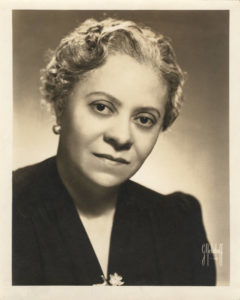
African American pianist and composer Florence Price
My research also took interactive forms. I did drive-arounds and walk-arounds with a camera. I browsed a holiday bazaar at Polish American church. I researched a breed of dog and checked out the tiger display at the zoo. I ate at a faux country club and at a genuine truck stop. Yes, research can turn into fun procrastination.

the fun part of research
Murder mysteries begin with violence and thrive on conflict. Research helps me imagine plausible ways for Erik and Deb to forge through the discord to glimmers of justice. It’s not exactly the United Nations, but it is, I hope, a larger world.
The post Research, Diversity, and Writing the Not Me appeared first on Priscilla Paton.
May 4, 2020
Heroes, Alfred Hitchcock, Pandemics, Cary Grant, and Formulas

That crop duster. The cornfield. Watch it.
Isolated at home during the Covid-19 pandemic and a dreary rainy spell, I watched in Technicolor glory Alfred Hitchcock’s 1959 film North by Northwest. Its lumens were intensified by the star power of Cary Grant, Eva Marie Saint, and James Mason. Cinematic thrills when my day was a dull formula of chair-bound tasks.
Alfred Hitchcock, Hitch, loved adapting a formula. The screenwriter Ernest Lehman wanted to concoct the ultimate Hitchcock film with North by Northwest, and it felt quintessential as I watched. (Homestay gives me time to think of words like ultimate and quintessential.) That Hitchcockian feel results from the archetype of an everyman, less often an everywoman, rising heroically to the occasion. The plight makes the man.
Hitch’s favored plight is the innocent bystander—“innocent” but increasingly resourceful—embroiled in a deadly espionage intrigue. He is attractive and witty, white and privileged. He becomes involved with a romantic interest on a train to double the danger, is nearly undone in a public space, and is pursued across a threatening landscape. His nemesis is an evil schemer. Nonetheless, our hero figures out how information is being conveyed to an enemy power, stops that transfer, and wins the girl. In saving himself, the hero saves the world order.
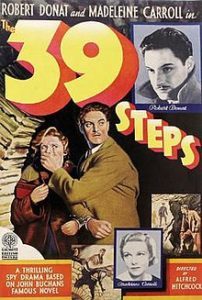
This the pattern of The 39 Steps from 1935 with the character Richard Hannay (Robert Donat with a silly mustache) and Pamela (Madeleine Carroll). The 39 Steps anticipates Hitchcock’s 1938 venture, The Lady Vanishes. The latter focuses on the female lead, a spirited young woman having a travel break before settling into dull marriage. The character Iris Henderson (Margaret Lockwood, a rare non-blond in the Hitchcock canon) is about to board an Alpine train when a plant pushed off a sill to kill another person hits her instead (the innocent is wrongfully targeted in the formula). The nonfatal blow confuses her. On the train she has tea (pay attention to the tea) with an old woman in tweed, how veddy British. Then the lady vanishes, and nobody but Iris claims to remember her. A brain surgeon on board blames Iris’s “hallucination” on her concussion. In such films, do not trust men like the surgeon who speak with level authority. Iris is eventually believed by a man she initially despised, Gilbert Redman ( with a silly mustache and about to become very famous). At peril to themselves, the couple has to unwrap the case to find the lady, and along the way convey key intelligence to a homeland on the edge of war.
By the time Cary Grant assumes the role, the silly mustache has gone away. Hitch first considered that everyman’s everyman, Jimmy Stewart. Stewart had starred in the The Man Who Knew Too Much (1956), itself a remake of Hitch’s 1934 film of that name. Again, the hero, Stewart, is an innocent caught up in international intrigue, and co-hero Doris Day is allowed to go deeper than her smile (she also sings Que Sera, Sera). The emotional stakes are high with a kidnapped child. The tension is at last relieved with the corny closing line, one of Hitch’s jokes. But the role evolved to suit Cary Grant, who made North by Northwest suave, glamorous. The gray suit he wore has its own following. Yet the Hitchcock leading man does have traits that appear less than heroic.
This is most obvious with Redgrave/Redman, first seen as a collector of folk music playing a recorder for thumping dancers. (Has James Bond ever played a recorder?) Donat/Hannay looks slick. But he’s from Canada. A naïve provincial. Grant, tall, handsome, and graying, dominates any space he enters. As Roger Thornhill in North by Northwest, he first appears on a New York City street as a charming cad moving with purpose, except his ad-man purposes like “think thin” are superficial. He patronizes his secretary and tasks her with writing “sincere” notes to the women in his life. However, Grant/Thornhill is tied to couture apron strings—he has “Mother” (Jessie Royce Landis). It is his attempt to send a telegram to Mother that puts him in the sights of spies, who mistake him for their enemy counterpart, George Kaplan. A mix-up of course, like the public soon mistaking Grant/Thornhill/Kaplan for a murderer.
There has to be a bad guy. Forget Psycho and psychos for the time being (but you can add Foreign Correspondent of 1940 to the espionage mix). For his quasi-political thrillers, Hitch favors the devious sophisticate whose accented tones are so controlled that you know he lacks a telltale human heart. In North by Northwest, James Mason as Vandamm is the brilliant exception that proves the rule—at two points in the film, words fail him. With perfect articulation, Mason/Vandamm uses his mistress, Eva Marie Saint/Eve Kendall, to keep track of Grant/Thornhill/Kaplan. Eva/Eve has the modulated coo of a seductress, as if she’s always about to breathe a sexy ooh. That low voice covers her intent(s), until she has to be “real” in the climax. She lures Grant/Thornhill into a trap that unlike most traps is out in the wide open, under the sunny skies of a Midwest prairie (which was shot in California).
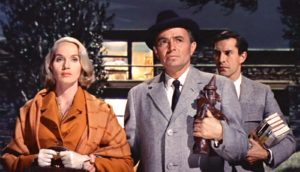
When Grant/Thornhill survives the crop duster scene, he confronts Mason/Vandamm at an art auction and insists in so many words that Eva/Eve threw her entire being into seducing him, a too-willing whore. The villain, who had been caressing his mistress’s slender neck, speechlessly drops his hand. Then the smooth articulation returns: “Has anyone ever told you that you overplay your various roles rather severely, Mr. Kaplan?” This may be an inside-Hollywood joke, but Grant/Thornhill next saves himself by overplaying the role of auction bidder. Mason/Vandamm loses his cool again when his “right arm” Leonard (hawkishly handsome Martin Landau) reveals a betrayal. Urbanity returns in the denouement when Mason/Vandamm delivers a meta-line on the suspension of disbelief. He remarks to his captors that it seems “unsporting” to use real bullets, and of course no real bullets were used—it’s a film, a fiction. Hitch flavors his suspense with tongue-in-cheek remarks and irony. The free world is saved by people clambering over the heads of presidents at Mt. Rushmore.

North by Northwest has more to recommend it. The formidable geometry and geography—the UN building, the treacherous coastal highway, the crossroads, the cantilevered house, the mountain. Eva Marie Saint’s wardrobe from Bergdorf Goodman. Leo G. Carroll, The spiky music by . It’s a grand illusion, an escape with the red-carpet treatment of The Twentieth Century Limited Train.
In this time of crisis, the scientific formulas, the economic formulas, and the formulas for being a responsible community of helpful individuals are undergoing constant change. It’s been unusual to do one’s duty by amusing oneself at home. As authorities plot what could or should happen next, with competing scripts revised daily, it is heartening to think that an everyman and an everywoman, without having planned or trained for a pandemic, can become a hero.
The post Heroes, Alfred Hitchcock, Pandemics, Cary Grant, and Formulas appeared first on Priscilla Paton.



